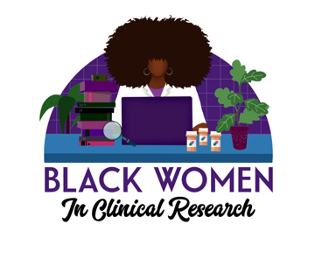Lifestyle medicine for healthcare professionals: How to prevent, treat, & recover from provider burnout
“Prior to the [COVID-19] pandemic, health care workers were already working in stressful circumstances, with more than 50% reporting burnout.”
Merlo & Rippe, 2020
Healthcare professionals are faced with unprecedented challenges in maintaining their mental wellness. Through the impact of the COVID-19 pandemic — experienced by healthcare providers both personally and professionally — burnout is likely to become more prevalent than ever, along with other mental health concerns. Increased rates of substance abuse, mood disorders such as anxiety and depression, and suicide from the residual effects of dealing with the global pandemic are predicted for the general population and healthcare providers alike, further exacerbating the issue.
Widespread burnout
In the latest edition of the World Health Organization’s International Disease Classification (ICD-11), burnout is included as an occupational syndrome “conceptualized as resulting from chronic workplace stress that has not been successfully managed.” The symptoms of burnout according to Maslach (1986) include:

- Emotional exhaustion: feelings of being emotionally overextended and exhausted by one’s work
- Depersonalization: an unfeeling and impersonal response toward recipients of one’s service, care, treatment, or instruction
- Reduced personal accomplishment: reduced feelings of competence and successful achievement in one’s work with people
Caring for the caregivers
Unfortunately for many healthcare providers, the prioritization of self-care to prevent burnout is rarely encouraged or reinforced throughout professional training. In the face of a global pandemic, it became an unimaginable luxury.
Until recently, it was the “hustle and grind” work culture that has been glorified. The less sleep you got, the more dedicated you appeared. The more tasks you took on, the more competent you seemed. The longer you stayed at work, the more positively your performance was regarded. The fewer breaks you took, the stronger you were believed to be. During training, you were expected to give everything you had to your chosen career path – and consequently, many healthcare professionals now feel they have nothing left. Despite the fact that very few employers and workplaces are structured to promote a culture of health and wellness the research strongly suggests that we are doing our patients a massive disservice if we are not prioritizing our own well-being.
While there’s only so much influence we can have over our organizations and the current structure of the healthcare system, something we can do as healthcare professionals is to practice healthy behaviors in our day-to-day lives. Building habits that support a healthy lifestyle can enhance resilience, cultivate overall well-being, and improve performance.
 Lifestyle medicine: An antidote
Lifestyle medicine: An antidote
Lifestyle medicine is the practice of using evidence-based therapeutic lifestyle interventions to prevent, treat, and often reverse chronic disease, and has been suggested as a potential antidote to provider burnout. The six pillars of lifestyle medicine include regular physical activity, plant-predominant eating pattern, stress management and mindfulness, restorative sleep, avoiding risky substances like alcohol and tobacco, building healthy social connections and practicing positive thinking.
Here are some helpful ways to leverage lifestyle medicine to protect against — and facilitate recovery from — burnout:
I. Stress management and mindfulness
Practicing stress management strategies regularly and consistently will make them more effective over time, and build your stress resiliency. When it comes to stress management, there are numerous techniques you can explore including a free 8-week Mindfulness-Based Stress Reduction program from Palouse Mindfulness. A few helpful strategies to get started are:
- Deep breathing: By taking deep breaths into the abdomen, we allow our body’s relaxation response to become more activated which can further suppress our stress response. I recommend trying a deep breathing activity I call the “Mindful Minute.” Set a timer for 60 seconds and then begin taking long, slow, deep breaths into the belly – counting each inhale/exhale as one breath. Continue counting how many deep breaths you take until the timer goes off, and then remember that number so you will be able to take a “mindful minute” wherever you are!
- Seated Meditation: If you haven’t tried formal meditation before, my recommendation is to start small! Set a timer for anywhere between 2-5 minutes, and find a comfortable seated position with a tall spine and follow the steps below:
- Relax your body and try to find where you most strongly connect with your breath: as it enters and exits the nostrils or with the rise and fall of the chest or abdomen.
- Take a few moments to explore these different areas of the body and where you can feel the breath the strongest. Observe your breathing – notice each time you breathe in and out.
- Remember, whether you are only able to focus for 5 seconds or the whole 5 minutes – it’s okay! The important part is noticing when our mind has wandered, and finding a way to softly, patiently, and gently refocus your attention back to connecting with the breath.
- When the timer goes off, begin to soften your awareness from the breath and allow your surroundings to slowly come back into your attention. When you feel ready, allow the eyes to open softly and bring gentle movement back to the body through small stretches.
- Healthy Outlets: When you have activities you can do that help you recover from stress, it’s important to also practice those regularly. It could be dancing, yoga, journaling, stand-up comedy, volunteering, knitting, coloring, or so many more options. Find what works best for you, and try to make time for it.
- Avoiding risky substances: When stress levels are high and job satisfaction levels are low, professionals may try to manage these symptoms by using substances like alcohol and tobacco. While these strategies may provide instant gratification, the adverse consequences over time will not only negatively impact your health but also your job performance. If you are looking for assistance with smoking cessation or moderating your alcohol use, make sure to visit resources like SmokeFree.gov and Rethinking Drinking.
II. Increase physical activity
Make sure you are getting daily movement! A healthy goal to aim for is 30 minutes of moderate to vigorous intensity physical activity 5-7 days per week, with two non-consecutive days of strength training to get the most health benefits, but any movement is better than none. Exercise helps to boost not only your immune system, but can also reduce symptoms of depression, anxiety, and stress – so you get the physical and emotional benefits of movement! Whether it’s a 5-minute dance break during your day, walking for 10 minutes on your lunch break, or hitting the gym for a sweat session, it’s important to continue finding enjoyable ways to get moving during the day to battle the health risks of sedentary lifestyles.
III. Restorative sleep
When experiencing sleep deprivation, we are more susceptible to increased stress and feelings of fatigue. Restorative sleep gives our mind and body time to recover from the stress experienced throughout the day and restore our emotional, physical, and mental resources. Most adults need 7-9 hours of restorative sleep per night, so make sure you are getting enough restful sleep. The following sleep hygiene strategies from SleepFoundation.org can help promote better quality sleep:
- Set a routine sleep schedule
- Avoid napping
- Create a nightly routine to help you relax
- Avoid screen-time 30-60 minutes before bed
- Practice relaxation techniques
- Regular physical activity
- Avoid caffeine after 12pm
- Avoid heavy meals before bed
- Create a comfortable bedroom environment
- Use the bed and bedroom for sleep only (with intimate activities being the only exception!)
IV. Practicing positivity
Research has suggested that positive psychology interventions can enhance resilience and increase quality of life. Positive psychology is the study of human flourishing or the strengths and virtues that enable individuals, communities, and organizations to thrive (Lianov, 2019). A few simple positive psychology interventions to incorporate into your daily routine include:
- Gratitude: Choose three specific things you are grateful for each day and write them down in a journal. You can choose specific prompts like, “Today I am grateful for…My favorite part of today was…I am looking forward to…What I am most grateful for right now is…”
- Acts of Kindness: Find a simple action to show someone kindness each day, even if it is a random act of kindness. When we do good for someone else, it gives us a boost of positive emotions, too!
- Smile and laugh!: Our brain chemistry responds the same way to genuine smiles and laughter as it does to forced smiles and laughter. Find yourself some funny videos and stand-up comedy bits that will get you laughing and smiling.
V. Healthful eating patterns
Recommendations for healthy eating to optimize performance and increase positive emotions include a wide variety of fiber-filled, nutrient-dense, and antioxidant-rich whole plant foods with every meal. It can be helpful to aim for “eating the rainbow” by selecting fruits and vegetables that create a variety of colors on your plate. Studies have begun showing a dose-response of happiness benefits with delayed effects into the next day when 7-8 or more daily servings of fruits and vegetables.
VI. Social connection
As humans, we are social creatures and creating a positive social support network is a significant factor to our health. While we faced significant challenges to social connection during the pandemic, technology allows us to continue interacting through phone calls, video calls, and conference calls. Even micro-moments of connection – including eye contact and smiling at a stranger as you walk by –are important for our well-being and should be practiced regularly.
With the rising awareness of healthcare professional burnout due to the COVID-19 pandemic, my hope is that a shift occurs across the healthcare industry as a whole to prioritize clinician well-being.
We have all experienced a massive disruption to the way the world has been, and it has shown us that our society needs to do better. This is our wake-up call to exchange toxic work cultures for more sustainable models that promote work-life integration and prioritize well-being. This is our opportunity to move forward in a way that promotes population health and begins to shift our healthcare to include whole-health models for patients, healthcare professionals, and communities.
If you are experiencing suicidal thoughts, please call the National Suicide Prevention Lifeline at 1-800-273-8255. You matter, and the world needs you, because there is no other you that exists.
If you are experiencing difficulties with anxiety, depression, substance use, or other challenges that are causing impairment in your life, reach out to a mental health professional to get personalized help to restore your physical, mental, and emotional wellness.
REFERENCES
- Rippe, J. M. (2021). Physician Burnout: The Role of Lifestyle Medicine.
- Lianov, L. (2021). A Powerful Antidote to Physician Burnout: Intensive Healthy Lifestyle and Positive Psychology Approaches. American Journal of Lifestyle Medicine, 15598276211006626.
- Esquivel, M. K. (2021). Nutrition Strategies for Reducing Risk of Burnout Among Physicians and Health Care Professionals. American Journal of Lifestyle Medicine, 15(2), 126-129.

Melyssa Allen, MA, DipACLM, CPT-EIM 1, is a certified lifestyle medicine, mental health, and fitness professional. She has served in numerous roles — as a mental and behavioral health specialist for Lake Nona Performance Center’s Medical Advisory Council, Wellness Manager for a residential mental health treatment facility, and currently, as Clinician Well-Being Coach for Orlando Health — in addition to founding her own coaching and consultation business, Mind-Body-Thrive Lifestyle. Driven by a background that spans biology, clinical psychology, and animal training, Melyssa is known for her expertise in mindfulness-based stress reduction, positive psychology interventions, and behavior change coaching using mindfulness, motivational interviewing, cognitive-behavioral therapy, and acceptance and commitment therapy. She is passionate about the interconnectedness of physical, mental, and emotional well-being, and helping individuals — from patients struggling with anxiety or substances, to healthcare providers battling burnout — implement transformative, sustainable change. She is an esteemed member of the American Psychological Association and American Counseling Association, and serves as Secretary for the American College of Lifestyle Medicine’s Fitness and Medicine member interest group.






